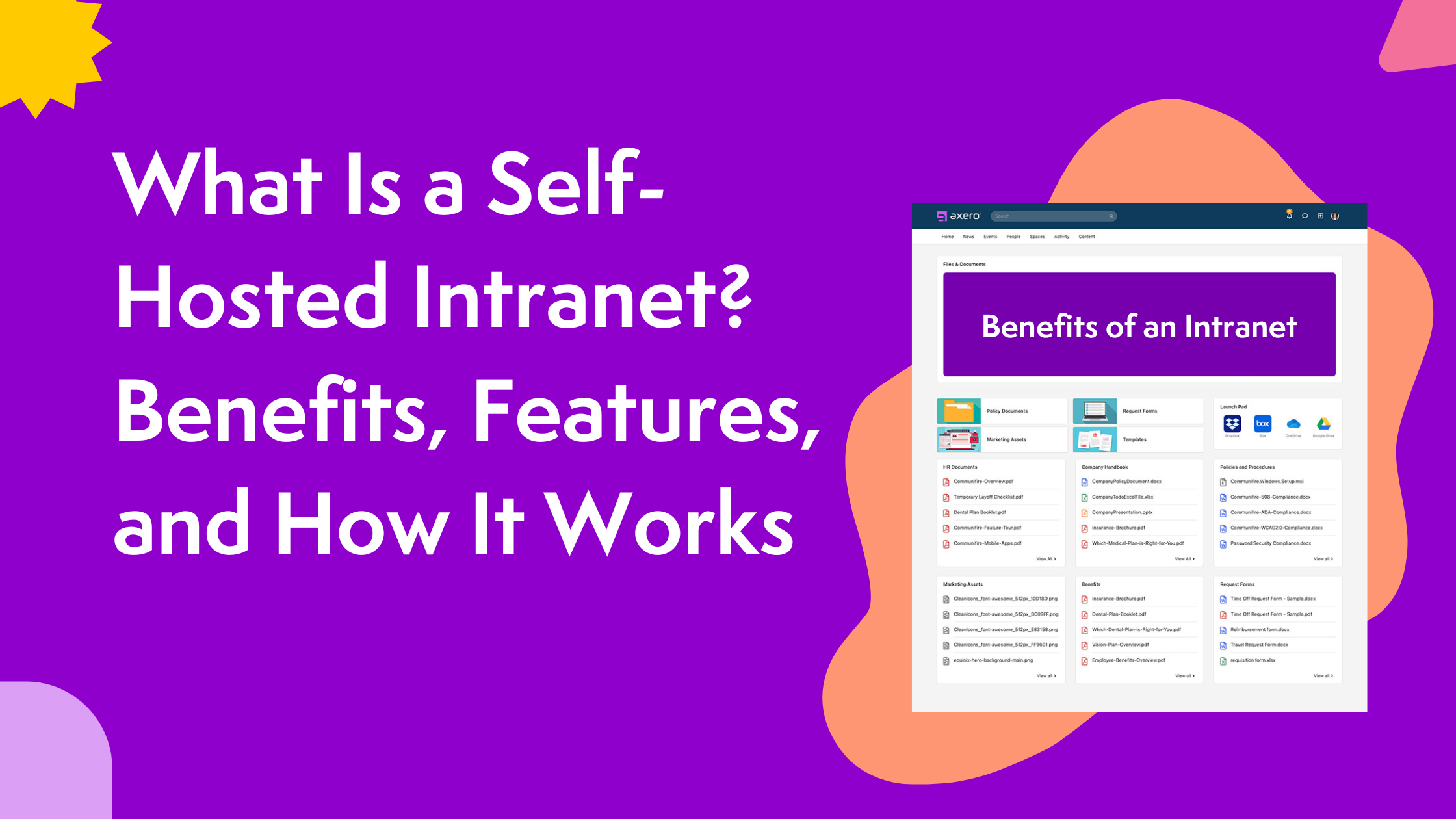If you’re launching intranet software for your organization, you should first of all give yourself a pat on the back.
Intranet software is truly a game-changer, and a streamlined, functional intranet can have a dramatically positive effect on businesses of any nature.
All this being said, it’s important to put a great deal of planning into the launch and rollout of your intranet. Rolling out intranet software isn’t something that happens overnight, and going about the process haphazardly can do more harm than good.
Like the Boy Scout motto goes, “Be Prepared.”
When you have a solid plan in place, an intranet launch will go quite smoothly.
The key is to ensure that you’re prepared for anything that might get in the way of a successful rollout, which isn’t always easy for those who are new to the concept of a social intranet.
If you follow these 10 intranet launch ideas, you’ll be on your way to rolling out your intranet without any hassles.
1. Set a Schedule
Many people get excited about the prospect of having an intranet platform for their organization and rush the roll out process.
In reality, a full roll out can take up to 4 to 5 weeks, and for larger companies it can take longer. If you don’t get started early and give yourself an adequate amount of time to devote to an intranet launch, you’ll inevitably run into problems throughout the process and end up missing the deadline you set for yourself.
When launching Axero, I suggest you go with a launch package, because we have a step-by-step process we take you through that we’ve learned from launching hundreds of intranets.
2. Take a Team-Based Approach
One of the main reasons why businesses choose to implement intranet software is to enhance collaboration between employees and colleagues.
It should stand to reason then, that taking a team-based approach to the intranet launch process can come with many benefits.
Think of your team as an intranet planning committee that will see the rollout process through from beginning to end, ensuring that any obstacles are dealt with in a swift and efficient manner.
Choose your team carefully, as these individuals may go on to become testers, and eventually even manage your intranet.
3. Set Intranet-Specific Goals
Chances are, there are many reasons why you’re choosing to deploy intranet software for your business. You may be looking to use it for external purposes as a method of customer support, for example, or simply enhance internal collaboration among employees.
Whatever your motives may be, it’s important to get them down on paper and translate them into concrete goals.
Setting specific goals will help ensure that you’re staying on track as your intranet begins to grow. Then, you can look back in a few months and make any necessary adjustments so that you achieve what you’re setting out to do with your intranet.
4. Consider Promotion
If you have any intention on using your intranet for external purposes, such as customer support or collaborating with partners, you’ll get a lot of mileage out of creating a promotional campaign.
After all, you want your customers (both current and potential) to be aware of the changes you’re making, and what better way to do so then to build a creative marketing campaign?
Outsourcing to a reputable marketing firm can be extremely beneficial in this case, although you can handle it in-house as well. Just be sure that the deadline you set for launching is one that you can stick to, or you’ll risk losing credibility.
5. Define Leadership Roles
An intranet that isn’t properly managed is bound to fail, which is just one reason why it’s essential to define intranet team roles early on in the implementation process.
There are many routes you can take, from assigning management responsibilities to a single individual or delegating various tasks to an entire group.
Many businesses find that a team approach is effective, especially when headed up by a specific leader.
If you launch your intranet without well-defined leadership roles, and the problems you might run into down the road will only get worse.
6. Schedule Training Sessions
Your intranet is only as efficient as those who are using it.
A training session or group of sessions can make all the difference in the world in regards to how well-versed your staff is on how to use your new intranet … especially when it comes to those who will be creating content on a regular basis.
When training employees, however, be careful not to overwhelm them with information.
Ideally, you should schedule specific training sessions for different employees or groups of employees based upon the tasks they’ll be expected to carry out within the intranet. This way, no one will have to worry about internalizing information that doesn’t apply to them.
7. Set Content Creation Policies
When intranet software operates at peak performance, it empowers employees and allows for creative thinking and problem solving that might otherwise be impossible.
At the same time, empowerment means that employees can sometimes get overzealous about the content they create.
You should always set content creation policies or general guidelines from the very beginning so that there’s no question regarding what’s alright to post and what isn’t.
Go over style guidelines, who can post, legal/security issues, and anything else that might come to mind, publishing all of this information in a document and distributing it to everyone who will be using the intranet.
You don’t have to be overly strict with your policies; just be sure not to leave out anything important.
8. Come Up with a Site Hierarchy
Ease of use is of the utmost importance during an intranet launch.
If you don’t come up with a hierarchy for your site, navigation will be far more difficult than it has to be.
Everyone using the intranet should have a solid understanding of where things are located, which is where sitemaps and sufficient navigation comes into play.
Creating a sitemap will help to paint a clear picture of how to use the intranet in as efficient a way as possible, and the earlier you do so, the less problems your employees will run into as they learn to use the intranet.
9. Keep your Budget in Mind
It goes without saying that an intranet can’t be built without money, yet many business owners aren’t careful enough with their budgets during the intranet launch.
There are a number of things to take into consideration, such as server and maintenance costs, employee salaries, software development costs and more.
Add everything up, and it can sometimes work out to be more costly than one expects.
Always take the time before you even get started with the rollout to ensure that you’ve properly budgeted for it, as budget issues can interrupt the process and cause costly delays.
10. Brand It!
In order to be most effective, your intranet needs to reflect the branding of your organization.
One of the key benefits of using flexible intranet software is that you can tweak things to be more in-line with your branding, be it with colors, logos, philosophies and otherwise.
Branding your intranet is especially important if you’ll be using it externally for customer support purposes, but proper branding will also sink into the minds of you and your employees.
There’s nothing more important than being proud of the company you’ve built or work for, and a well-branded intranet will only serve to further this sense of satisfaction.
In Conclusion
Keep in mind during the rollout process that sometimes things simply do go wrong, no matter how much work you’ve put into the preventative process.
It’s not uncommon to get frustrated when something like this happens, but you’ve got to remain focused on continuing the launch and properly deploying your new intranet.
If you follow these 10 intranet launch ideas, and keep your eyes on the prize, everything should fall into place for you and your organization.













 info@axerosolutions.com
info@axerosolutions.com 1-855-AXERO-55
1-855-AXERO-55


